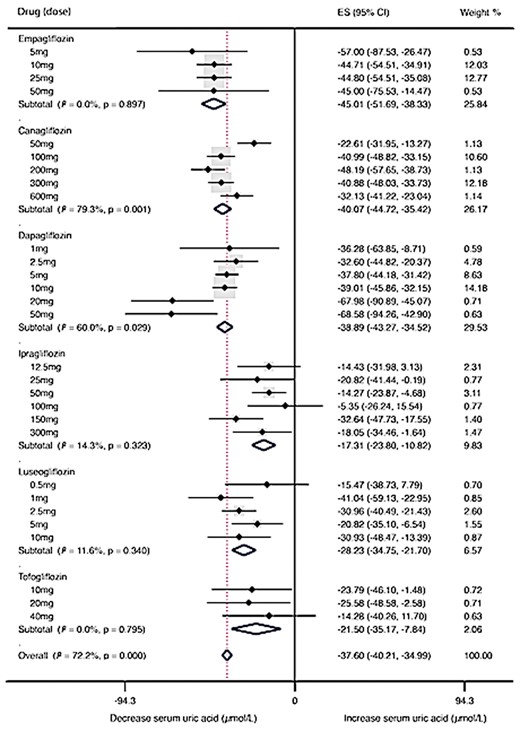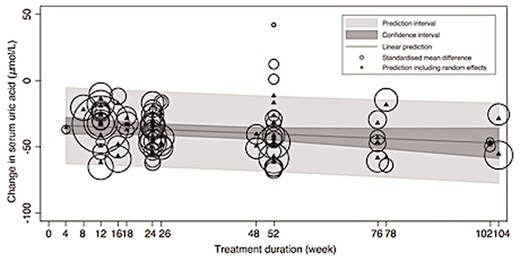-
PDF
- Split View
-
Views
-
Cite
Cite
Yumo Zhao, Lubin Xu, Bingqing Zhang, Limeng Chen, TO027
EFFECTS OF SODIUM-GLUCOSE CO-TRANSPORTER 2 INHIBITORS ON SERUM URIC ACID LEVEL: A SYSTEMATIC REVIEW AND META-ANALYSIS, Nephrology Dialysis Transplantation, Volume 32, Issue suppl_3, May 2017, Pages iii89–iii91, https://doi.org/10.1093/ndt/gfx132.TO027Close - Share Icon Share
INTRODUCTION AND AIMS: Hyperuricemia has proven to be a risk factor for type 2 diabetes mellitus (T2DM) and diabetic nephropathy. Sodium-glucose co-transporter 2 (SGLT2) inhibitors are a promising class of oral anti-diabetics increasing urine glucose excretion by SGLT2 inhibition in the proximal tubule, showing renoprotective effects. However, whether SGLT2 inhibitors induce serum uric acid (SUA) reduction by facilitating urine uric acid excretion remains unclear. We aimed to quantify the effect of SGLT2 inhibitors on SUA level in T2DM patients.
METHODS: CENTRAL, EMBASE, PubMed, and ClinicalTrials.gov (up to 25 Jan 2017) were searched for fully published randomised controlled trials (RCTs) of SGLT2 inhibitors in T2DM patients with at least 4 weeks duration that reported changes in SUA levels. Random-effects models were used to estimate weighted mean differences (WMDs) and accompanying 95% confidence intervals (CIs) between each SGLT2 inhibitor and control. Meta-regression was performed to evaluate if changes in SUA levels are dependent on SGLT2 inhibitor dosage or treatment duration.
RESULTS: 58 RCTs evaluating Empagliflozin, Canagliflozin, Dapagliflozin, Ipragliflozin, Luseogliflozin, Tofogliflozin in 26,285 T2DM patients with treatment duration ranging from 4 to 104 weeks were included. SGLT2 inhibitors significantly decreased SUA levels compared with control (Total WMD -37.60μmol/L, 95% CI [-40.21, -34.99]). Largest SUA-reductions were seen with Empagliflozin (WMD -45.01μmol/L, 95% CI [-51.69, -38.33]). Heterogeneity was observed between SGLT2 inhibitors, dosages and treatment durations. Meta-regression showed no significant association between uric acid-lowering effects with SGLT2 inhibitor dosage and treatment duration.

TO027 Figure 1

TO027 Figure 2





Comments